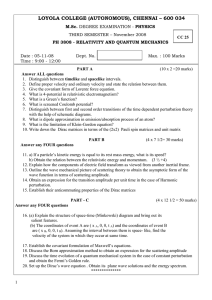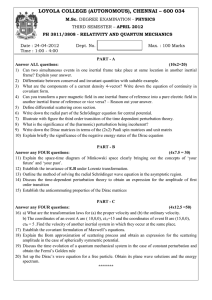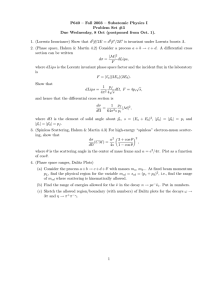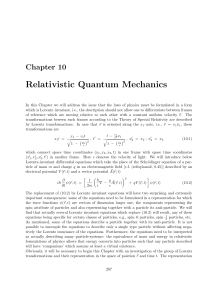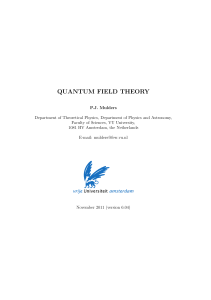LOYOLA COLLEGE (AUTONOMOUS), CHENNAI – 600 034
advertisement
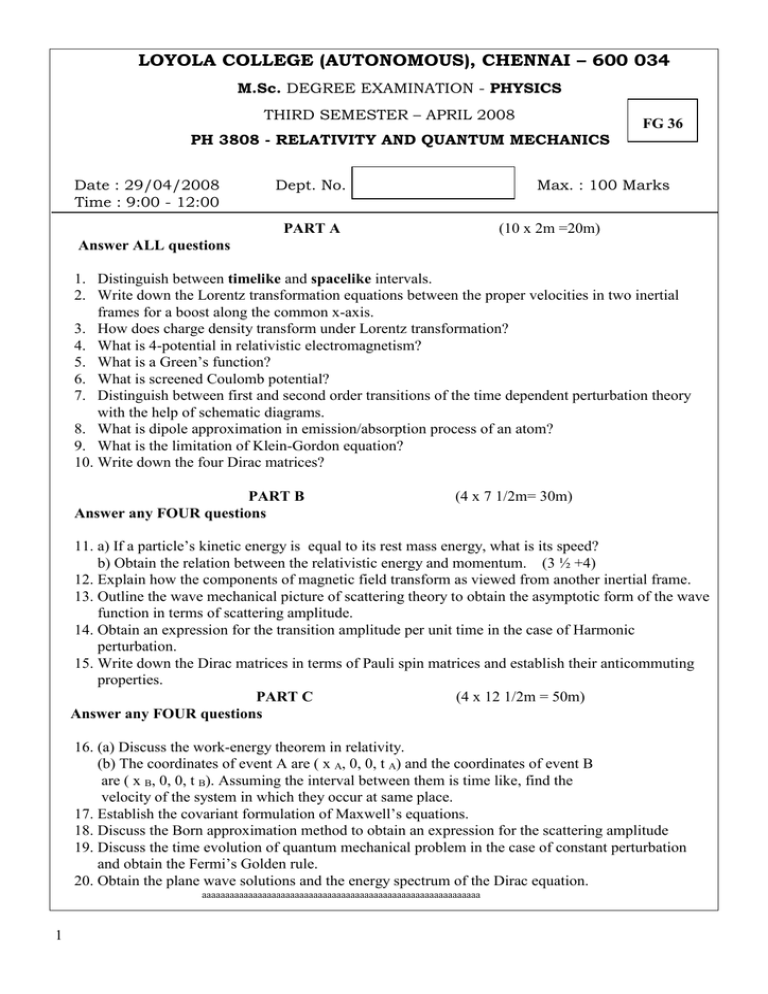
LOYOLA COLLEGE (AUTONOMOUS), CHENNAI – 600 034 M.Sc. DEGREE EXAMINATION - PHYSICS THIRD SEMESTER – APRIL 2008 FG 36 PH 3808 - RELATIVITY AND QUANTUM MECHANICS Date : 29/04/2008 Time : 9:00 - 12:00 Dept. No. Max. : 100 Marks PART A (10 x 2m =20m) Answer ALL questions 1. Distinguish between timelike and spacelike intervals. 2. Write down the Lorentz transformation equations between the proper velocities in two inertial frames for a boost along the common x-axis. 3. How does charge density transform under Lorentz transformation? 4. What is 4-potential in relativistic electromagnetism? 5. What is a Green’s function? 6. What is screened Coulomb potential? 7. Distinguish between first and second order transitions of the time dependent perturbation theory with the help of schematic diagrams. 8. What is dipole approximation in emission/absorption process of an atom? 9. What is the limitation of Klein-Gordon equation? 10. Write down the four Dirac matrices? PART B Answer any FOUR questions (4 x 7 1/2m= 30m) 11. a) If a particle’s kinetic energy is equal to its rest mass energy, what is its speed? b) Obtain the relation between the relativistic energy and momentum. (3 ½ +4) 12. Explain how the components of magnetic field transform as viewed from another inertial frame. 13. Outline the wave mechanical picture of scattering theory to obtain the asymptotic form of the wave function in terms of scattering amplitude. 14. Obtain an expression for the transition amplitude per unit time in the case of Harmonic perturbation. 15. Write down the Dirac matrices in terms of Pauli spin matrices and establish their anticommuting properties. PART C (4 x 12 1/2m = 50m) Answer any FOUR questions 16. (a) Discuss the work-energy theorem in relativity. (b) The coordinates of event A are ( x A, 0, 0, t A) and the coordinates of event B are ( x B, 0, 0, t B). Assuming the interval between them is time like, find the velocity of the system in which they occur at same place. 17. Establish the covariant formulation of Maxwell’s equations. 18. Discuss the Born approximation method to obtain an expression for the scattering amplitude 19. Discuss the time evolution of quantum mechanical problem in the case of constant perturbation and obtain the Fermi’s Golden rule. 20. Obtain the plane wave solutions and the energy spectrum of the Dirac equation. aaaaaaaaaaaaaaaaaaaaaaaaaaaaaaaaaaaaaaaaaaaaaaaaaaaaaaaaaaaa 1
